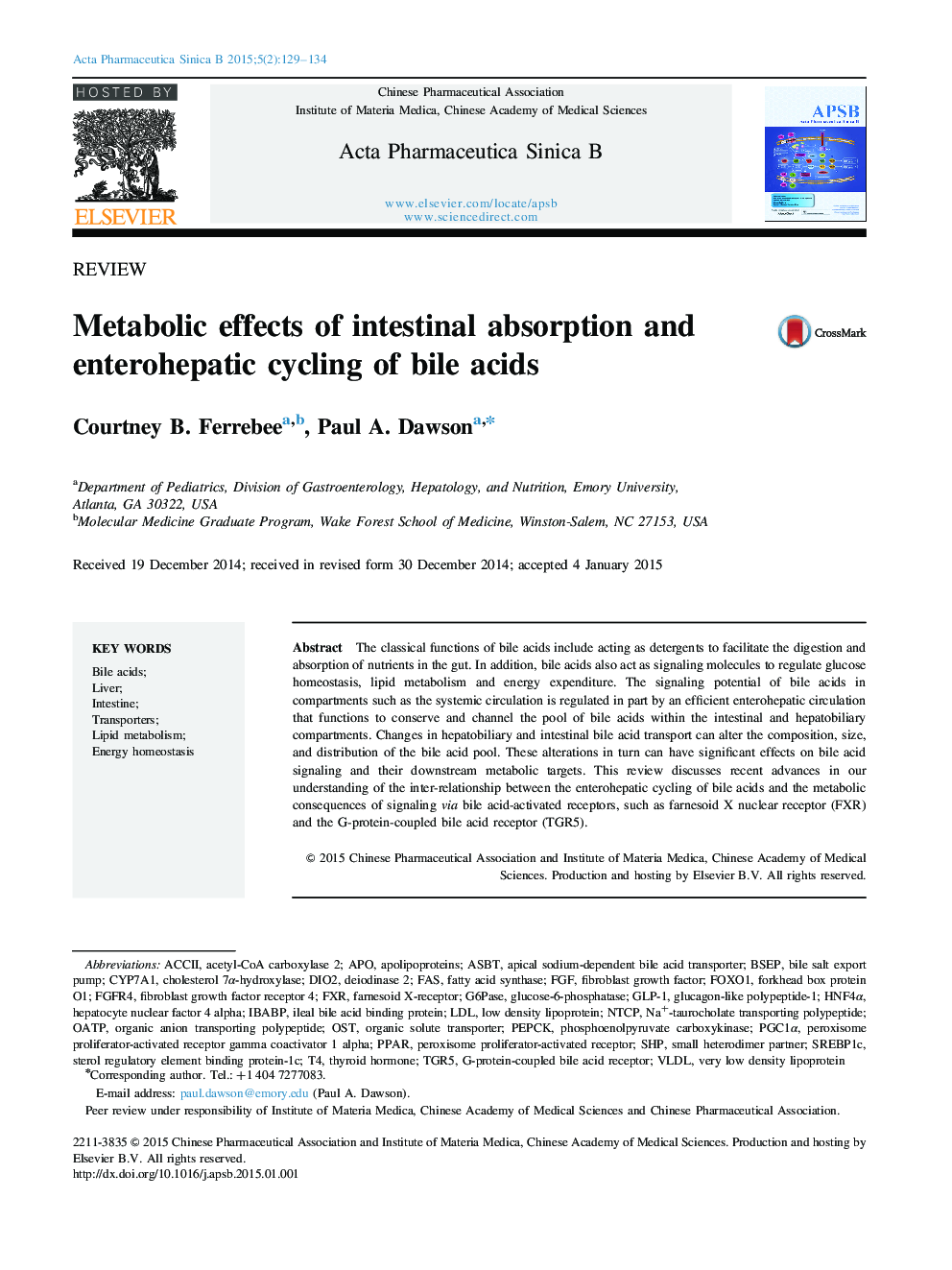| کد مقاله | کد نشریه | سال انتشار | مقاله انگلیسی | نسخه تمام متن |
|---|---|---|---|---|
| 2474608 | 1113151 | 2015 | 6 صفحه PDF | دانلود رایگان |
The classical functions of bile acids include acting as detergents to facilitate the digestion and absorption of nutrients in the gut. In addition, bile acids also act as signaling molecules to regulate glucose homeostasis, lipid metabolism and energy expenditure. The signaling potential of bile acids in compartments such as the systemic circulation is regulated in part by an efficient enterohepatic circulation that functions to conserve and channel the pool of bile acids within the intestinal and hepatobiliary compartments. Changes in hepatobiliary and intestinal bile acid transport can alter the composition, size, and distribution of the bile acid pool. These alterations in turn can have significant effects on bile acid signaling and their downstream metabolic targets. This review discusses recent advances in our understanding of the inter-relationship between the enterohepatic cycling of bile acids and the metabolic consequences of signaling via bile acid-activated receptors, such as farnesoid X nuclear receptor (FXR) and the G-protein-coupled bile acid receptor (TGR5).
This review discusses recent advances in our understanding of the inter-relationship between the enterohepatic cycling of bile acids and the metabolic consequences of signaling via bile acid-activated receptors such as farnesoid X nuclear receptor (FXR) and the G-protein-coupled bile acid receptor (TGR5). Figure optionsDownload as PowerPoint slide
Journal: Acta Pharmaceutica Sinica B - Volume 5, Issue 2, March 2015, Pages 129–134
